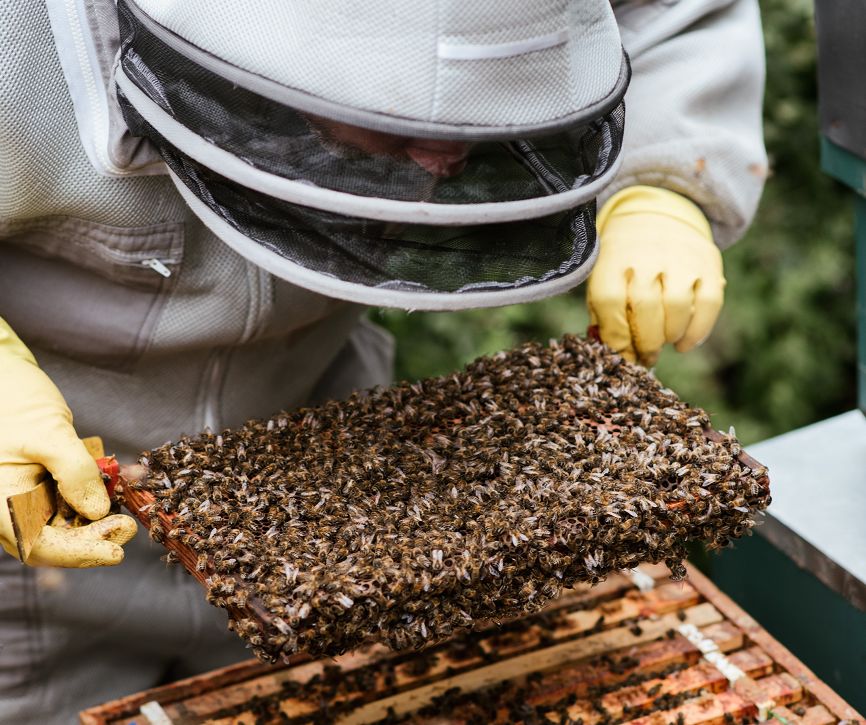Everything You Need To Know About European Foulbrood (EFB)
While some parts of the world have been able to avoid European foulbrood disease (EFB), Australia hasn’t been so lucky. The bacterial brood disease is common in Eastern Australia and has been found in other parts of the country.
Because Australia’s honeybees are so important to the economy and exports through jobs, honey production and crop pollination, the Australian Government is investing in solutions to keep this devastating disease at bay.
The National Bee Biosecurity Program is one piece of the puzzle. It’s designed to prevent, identify and manage EFB, among other established pests and diseases, to minimise the impact on the industry.
Here’s how you can help reduce the risk to your bees:
Understanding EFB
EFB is produced by the bacterium Melissococcus pluton and affects larvae in the hive. In the beginning, it can reduce the population of the hive, but extreme and untreated EFB can cause full colony collapse.
The larvae become infected in various ways depending on the source of the bacterium, including:
• Consuming food that is contaminated
• Robbing — a colony that is already infected will become weak and is more likely to rob, resulting in the spread of EFB.
• Contaminated beekeeping equipment that was not disinfected properly
• Moving combs around hives without knowing one hive was infected, subsequently infecting other hives
The bacterium grows in the gut of the larva, taking most of its food. This leads to starvation, a beekeeper's worst nightmare. Dead larvae turn to a dry, dark scale, which can further spread the EFB bacteria. If the larvae manage to survive and mature, the bees’ faeces also spread the disease through the hive.
Stress in the hive affects the immunity of the bees and larvae, increasing the risk of infection. Stress can come from things like moving, poor weather conditions or lack of nutrition.
EFB Symptoms
EFB can be difficult to spot, so it’s important to know exactly what you are looking for. While most common in spring and autumn, it’s recommended to examine your hives at least twice a year.
Remove every frame from the hive, relocate the bees during the inspection and look for the following symptoms:
• Larvae changing from white to yellow or brown with visible light-coloured lines – signs of diseased tracheae
• Larvae appear to be curled upwards
• Dead larvae with a watery or rubbery texture
• Sour odour within the hive
• An irregular brood pattern or a mix of capped and uncapped larvae
EFB vs AFB
While EFB is often mistaken for American foulbrood disease (AFB), they’re caused by different bacteria and have subtly different symptoms.
Key differences:
• AFB is found in the prepupal or pupal stage — not the larvae.
• You won’t see a trachea outline with AFB.
• Hives with AFB have a fishy odour, while EFB hives tend to smell sour.
EFB Treatment Options
EFB can be treated with antibiotics, which increase the risk of creating antibiotic-resistant strains of the disease. There may also be small amounts of antibiotics in the honey produced by the hive.
The best method is the destruction of the entire infected colony. If you have multiple colonies and more than 10 per cent are infected, every hive and colony should be treated.
If you choose to take the antibiotic route, the most common is oxytetracycline hydrochloride. This is usually used three times, five to seven days apart.
EFB Prevention Methods
Preventative measures can help avoid EFB altogether, keeping hives safe and healthy. It’s important to carry these out all year round to keep EFB and other diseases from entering your colony.
You can never have complete protection, but these steps will significantly reduce the risk:
•Employ strict hygiene procedures for all equipment used on or in the hive.
•Avoid the introduction of unknown bees or equipment into the hive.
•Minimise stress as much as possible.
•Keep food supply steady, either through nectar, pollen or artificial feeding. This also helps reduce stress.
•Replace older queens before they die – a younger queen generally means a populated and healthy hive.
•Breed with bees that are resistant to the disease if you can.
Who to call if you suspect a case of EFB?
If you find a suspected case of EFB in Australia, you can call the Australian Honey Bee Industry Council on 0402 467 780.
Want to know more about keeping your hives healthy and stress-free? Talk to the team at Ecrotek.

